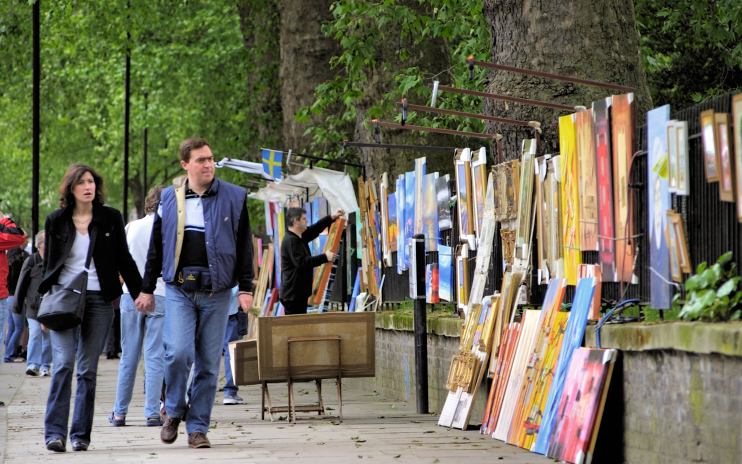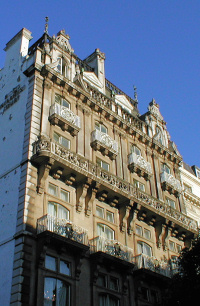Bayswater
Bayswater, Westminster
An enclave of hotels and (mostly) high-class housing lying north of Kensington Gardens

Bayswater began as a hamlet located close to present-day Lancaster Gate but the name now covers a wide area stretching west to Notting Hill, north as far as Westbourne Green and east to Paddington – or even beyond, to Marble Arch.
In 1380 this was Bayard’s Watering Place. The water was provided by the stream later known as the Westbourne. A bayard was a bay (chestnut) horse but some suggest the name may have come from a resident called Baynard. The hamlet was intermediately known as Bayswatering, while Bayswater was first recorded in 1659, when just a handful of houses stood here.
Apart from some tea gardens, a lying-in hospital and the inevitable inn or two, Bayswater remained almost entirely undeveloped in the 18th century.
Speculative builders began to grab the land here in 1809, led by Bond Street printmaker Edward Orme. Single and paired villas with gardens were initially the favoured types of dwellings but tree-lined, terraced avenues, squares and crescents rapidly extended the district in the 1840s and 1850s. A ‘splendid new town’ had come into existence by the time Bayswater station opened in 1868.

Artists and writers came here when the district was still semi-rural but were soon succeeded by more conventional members of the upper classes.
Bayswater was nicknamed ‘Asia Minor’ in 1885 and Indian fruits and vegetables were on sale in the local shops, but the customers were military and administrative professionals with south Asian experience rather than immigrants from the subcontinent.
Greeks and Jews also settled here, establishing their own places of worship on Moscow Road and St Petersburgh Place respectively.
Late in the 19th century some of the earliest houses were rebuilt, while others were replaced with flats. Hotels and mansion blocks made up the lion’s share of replacement building between the wars.
From the early 1960s some new hotels were added, while older ones were converted into flats. Also around this time an open-air art market began on Bayswater Road. Nowadays more than 150 artists display their work every Sunday from 10am to 6pm (see the photograph at the top of the page). Bayswater was designated a conservation area in 1967, constraining subsequent redevelopment.
Since the 1980s Bayswater has been the focus of a wave of settlement by Middle Eastern expatriates, who patronise the shops and services on Queensway and Edgware Road. The locality is also a popular place of residence for people from all over continental western Europe.
Westminster council is presently championing the ‘regeneration’ of Queensway into ‘Bayswater Village’. This will be spearheaded by the super-prime Park Modern project by the property developers Fenton Whelan.
The engineer Rookes Crompton electrically illuminated his house in Porchester Gardens in 1879.
A ‘dry land sailor’ used to be known as a Bayswater Captain.
According to Sam Selvon’s modern classic The Lonely Londoners (1956), Bayswater’s West Indian residents used to refer to the locality as ‘the Water’.
